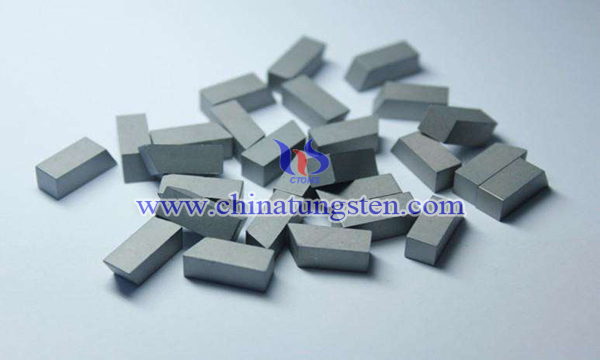Short Run Production of Tungsten Carbide Die
- Details
- Category: Tungsten Information
- Published on Sunday, 22 July 2018 20:33
The short run production and trial production of tungsten carbide die adopt simple punching die and combined punching die, which require simple structure, short manufacturing cycle and low cost. Five commonly used dies are as follows:

(1) For steel skin blanking dies, the quenched 2~ 3mm thick steel skin is used as the cutting edge. Other subjects are made of wood or part of wood (Chinese wood or laminated veneer board). It is suitable for large parts with more straight lines or simpler shapes. Its characteristics are: short manufacturing cycle, low cost and light weight. At present, a small amount of trial production has begun in the electronics industry.
(2) The laminated die is made of 0.5~0.8mm steel skin. It can be punched to 0.1~0.3mm thick parts, of which the service life span can reach thousands to tens of thousands.. The advantage is that the manufacturing cycle is short and the cost is low, and the die steel can be saved.
(3) Made of polyurethane rubber and the urethane rubber die, polyurethane rubber die is suitable for blanking thin materials with a material thickness less than 0.3 mm thick. Polyurethane rubber has high wear resistance, high hardness, high oil resistance and good compressive and cushioning properties. Therefore, in addition to blanking, it can complete bending, forming and other processes.
(4) Kirsite die is a kind of blanking die which made of zinc alloy with low melting point. In addition to kirsite die, the casting method can also be used to manufacture the bending die and drawing die, which is characterized by low manufacturing cost, short cycle and the die that can be remelted.
(5) Split punch has two kinds of decomposing and building blocks. The decomposition method is based on the shape of the workpiece, and is punching gradually on the punching die with adjustable punching angle, groove, circular arc and circular hole. And the building block combined die is divided into five parts: the base part, the edge part, the locating part, the unloading part and the fixing part. According to the geometry and requirements of the stamped parts, the components are grouped together for blanking.
In recent years, with the continuous development of precision machinery, the fine blanking technology has been used to produce tungsten carbide dies in the electronics industry.
- Tungsten Carbide Manufacturer & Supplier, Chinatungsten Online: tungsten-carbide.com.cn
- Tungsten News & Prices of China Tungsten Industry Association: www.ctia.com.cn
- Molybdenum News & Price: news.molybdenum.com.cn
- Tel.: 86 592 5129696; Fax: 86 592 5129797; Email: sales@chinatungsten.com



 sales@chinatungsten.com
sales@chinatungsten.com